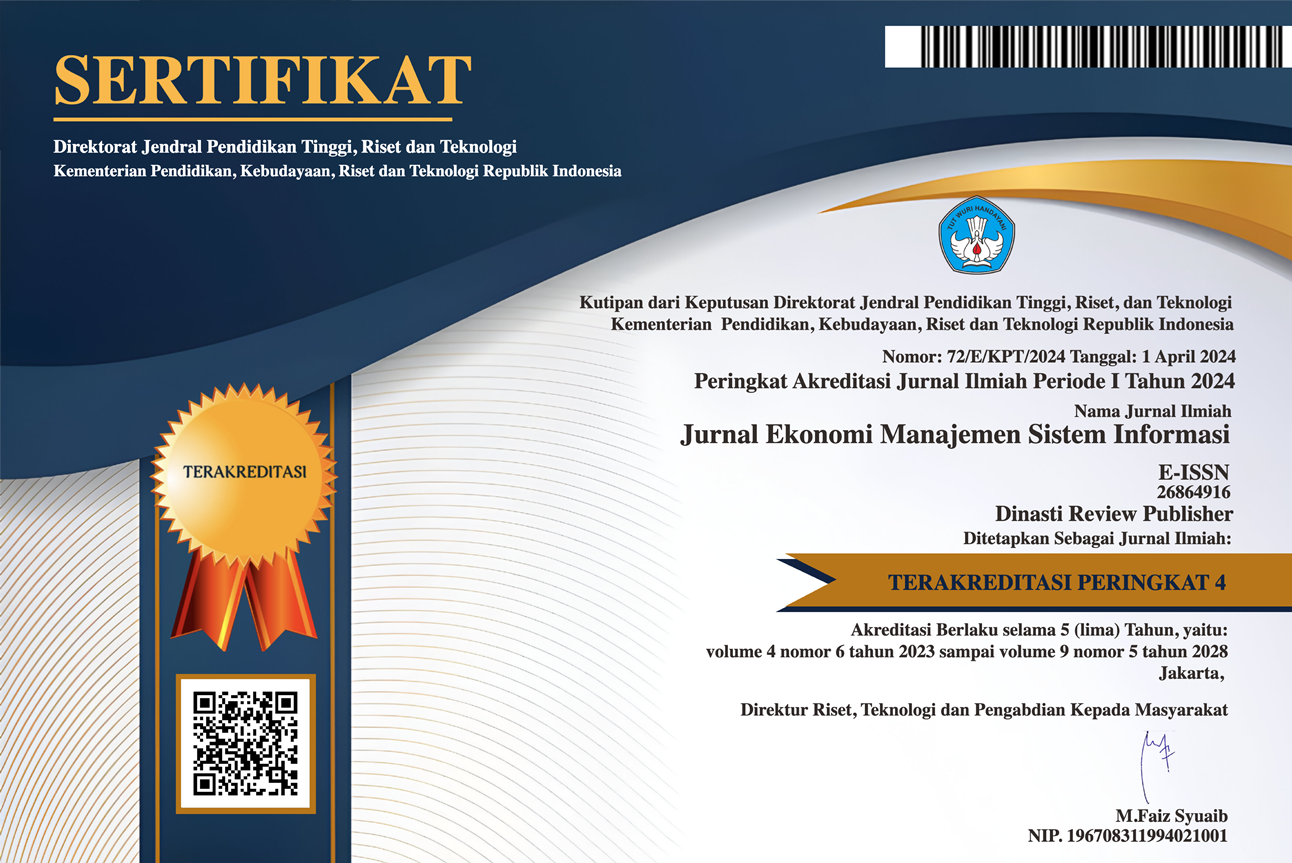Analisis Kesuksesan Learning Management System (LMS) Menggunakan Model ISSM Pada PT. XYZ
DOI:
https://doi.org/10.31933/jemsi.v5i2.1689Keywords:
Learning Management System, ISSM, User SatisfactionAbstract
The use of the Learning Management System (LMS) is one form of technological advancement in the field of education used by PT. XYZ, where PT. XYZ provides a learning platform using this method. The Learning Management System method, which is considered a one-way learning method, raises issues where users can only access learning materials in the form of videos but cannot interact with the instructors, making it impossible for users to ask questions related to the material provided. This has an impact on users who are deemed not to be maximizing their understanding and ability to answer questions related to the given material. This research aims to explore the factors of the effectiveness of the Learning Management System at PT. XYZ based on the DeLone and McLean (DLML) model. The research method used in this study is quantitative. The results of this research are that the factors that most influence the success of the Learning Management System are User Satisfaction and Net Benefits, where these two indicators are influenced by System Quality, Information Quality, and Service Quality. The results of the hypothesis testing indicate that these factors have a positive influence, especially on User Satisfaction with the Learning Management System, which is the Net Benefit. This is supported by the results of the hypothesis testing, which show that the original sample has the highest value for the User Satisfaction variable compared to other variables.
References
Ainul Bashir, N. A. (2020). Penerapan Model UTAUT 2 Untuk Mengetahui Faktor-Faktor Yang Memengaruhi Penggunaan SIORTU. Elinvo (Electronics, Informatics, and Vocational Education), 5(1), 42–51.
https://doi.org/10.21831/elinvo.v5i1.30636
Chopra, G., Madan, P., Jaisingh, P., & Bhaskar, P. (2019). Effectiveness of e-learning portal from students’ perspective: A structural equation model (SEM) approach. Interactive Technology and Smart Education, 16(2), 94–116. https://doi.org/10.1108/ITSE-05-2018-0027
Fitriani, Y. (2020). ANALISA PEMANFAATAN LEARNING MANAGEMENT SYSTEM(LMS) SEBAGAI MEDIA PEMBELAJARAN ONLINESELAMAPANDEMICOVID-19. JISICOM (Journal of Information System, Informatics and Computing), 4(2). http://journal.stmikjayakarta.ac.id/index.php/jisicomTelp.+62-21-3905050,
Jamieson, S. (2004). Likert scales: How to (ab)use them. In Medical Education (Vol. 38, Issue 12, pp. 1217–1218). https://doi.org/10.1111/j.1365-2929.2004.02012.x
Putri, P. R., Faroqi, A., & Safitri, M. (2023). Penerapan Model DeLone & McLean dalam Menganalisis Faktor-Faktor Keberhasilan Aplikasi Learning Management System. KLIK: Kajian Ilmiah Informatika Dan Komputer, 3(6), 1179–1190. https://doi.org/10.30865/klik.v3i6.951
Wijaya, K., & Wira Harjanti, T. (2021). QUALITY ASSURANCE PADA SISTEM ERP EQUIP MODUL PURCHASE DAN INVENTORY DI PT. HASHMICRO SOLUSI INDONESIA. Jurnal Maklumatika, 8(1).
Yona Sidratul Munti, N., & Asril Syaifuddin, D. (2020). Analisa Dampak Perkembangan Teknologi Informasi Dan Komunikasi Dalam Bidang Pendidikan. Jurnal Pendidikan Tambusai , 4(2).
Downloads
Published
How to Cite
Issue
Section
License
Hak cipta :
Penulis yang mempublikasikan manuskripnya di jurnal ini menyetujui ketentuan berikut:
- Hak cipta pada setiap artikel adalah milik penulis.
- Penulis mengakui bahwa Jurnal Ekonomi Manajemen Sistem Informasi (JEMSI) berhak menjadi yang pertama menerbitkan dengan lisensi Creative Commons Attribution 4.0 International (Attribution 4.0 International CC BY 4.0) .
- Penulis dapat mengirimkan artikel secara terpisah, mengatur distribusi non-eksklusif manuskrip yang telah diterbitkan dalam jurnal ini ke versi lain (misalnya, dikirim ke repositori institusi penulis, publikasi ke dalam buku, dll.), dengan mengakui bahwa manuskrip telah diterbitkan pertama kali di Jurnal Ekonomi Manajemen Sistem Informasi (JEMSI).











































































